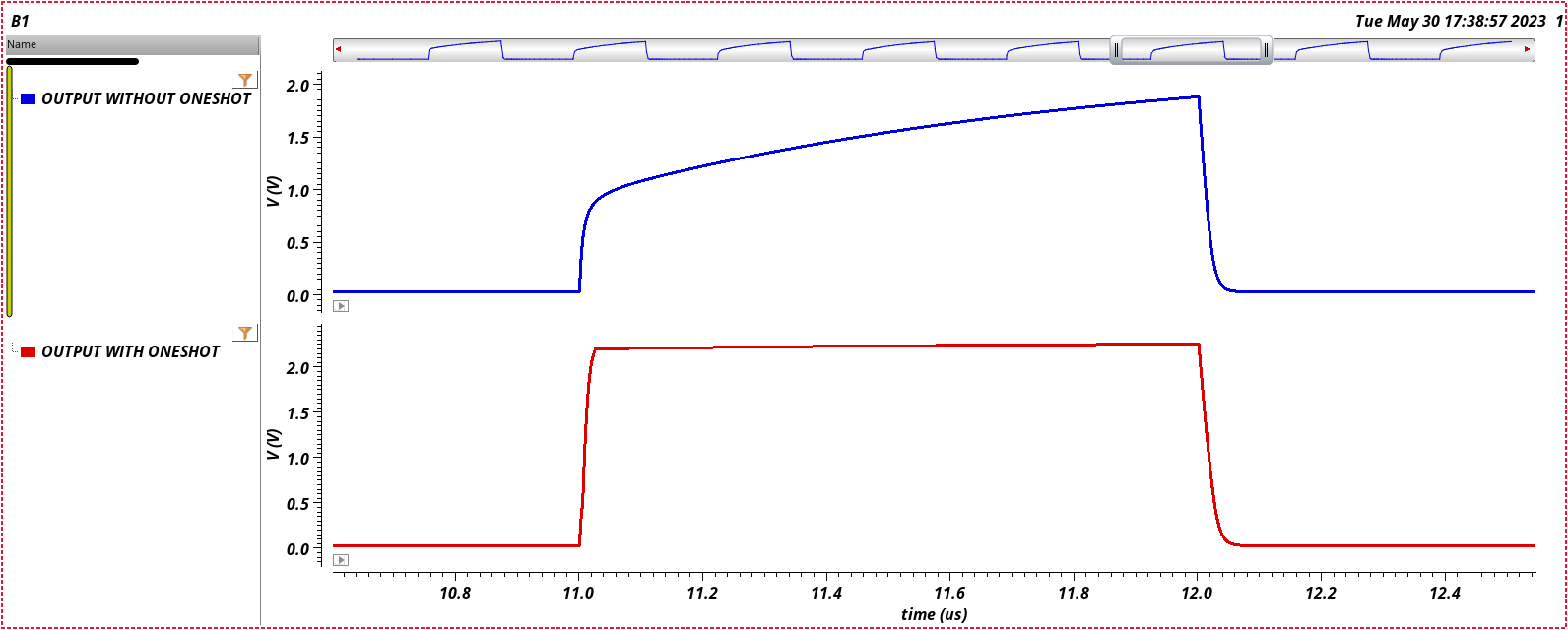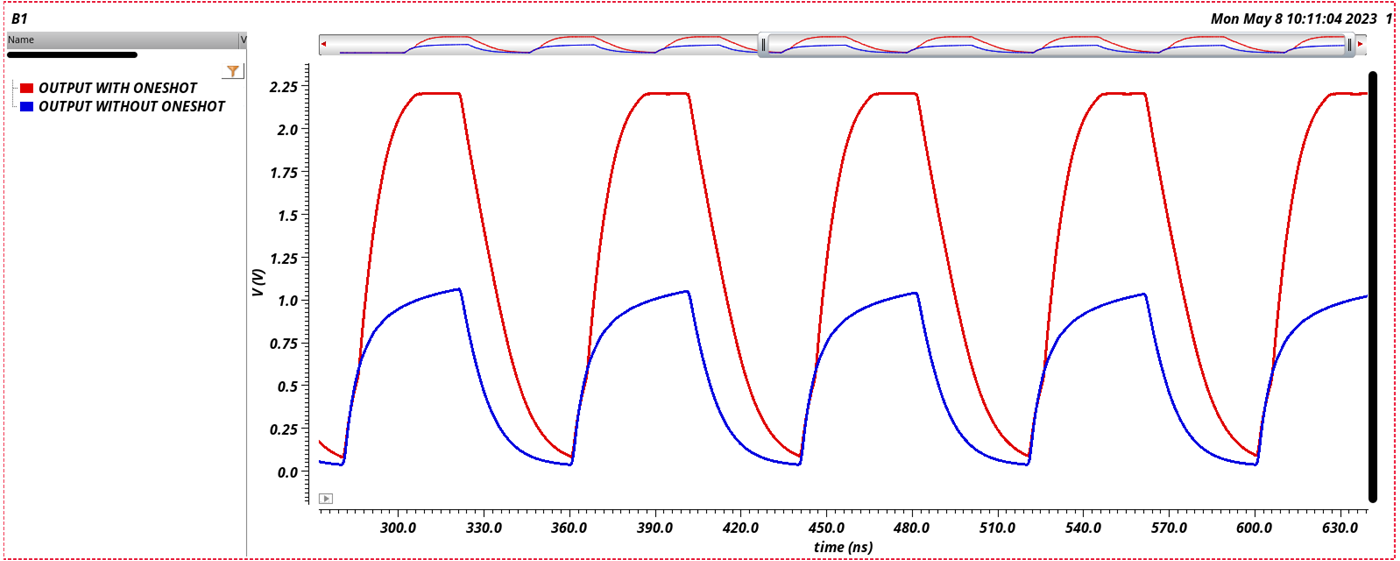SCEA131 September 2023 TXB0101 , TXB0102 , TXB0104 , TXB0104-Q1 , TXB0106 , TXB0106-Q1 , TXB0108 , TXB0108-Q1 , TXB0302 , TXB0304 , TXS0101 , TXS0101-Q1 , TXS0102 , TXS0102-Q1 , TXS0104E , TXS0104E-Q1 , TXS0108E , TXS0108E-Q1
2 One-Shot Performance
The one-shot performance in Figure 3-14 and Figure 3-18 shows the difference between the TXS / TXB device with and without the one-shot. Similar to Table 1-1, the figures highlight a faster rising edge with the one-shot as compared to the device without the one-shot. The device without the one-shot has a weaker drive with a higher output resistance, yielding a slow response. As the speed gets faster, its output level will be unable to reach the desired level. This highlights the advantage of the one-shot for bidirectional applications needing increased data throughput for better signal integrity.
 Figure 2-1 One-Shot
Performance at Slower Speed
Figure 2-1 One-Shot
Performance at Slower Speed Figure 2-2 One-Shot
Performance at the Data Sheet Max Data Rate
Figure 2-2 One-Shot
Performance at the Data Sheet Max Data Rate